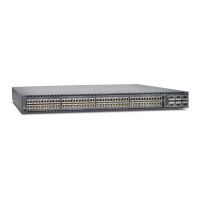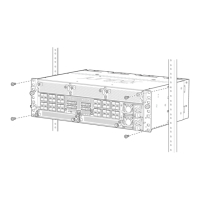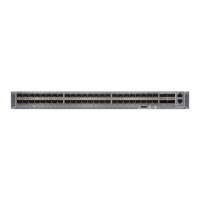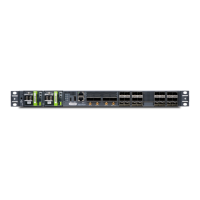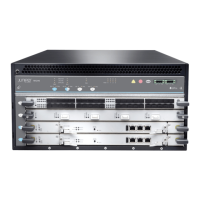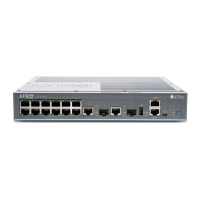Figure 30: Connecting a Fiber-Optic Cable to an Optical Transceiver
Installed in an ACX Series Router
g027016
Fiber-optic cable
Transceiver
4. Secure the cables so that they are not supporting their own weight. Place excess cable
out of the way in a neatly coiled loop. Placing fasteners on a loop helps cables maintain
their shape.
CAUTION: Do not bend fiber-optic cables beyond their minimum bend
radius.An arc smallerthan a few inches in diameter can damagethe cables
and cause problems that are difficult to diagnose.
Do not let fiber-optic cables hang free from the connector. Do not allow
fastened loops of cables to dangle, which stresses the cables at the
fastening point.
See Also Maintaining Cables That Connect to ACX1000 and ACX1100 Network Ports on page 109•
• Understanding Fiber-Optic Cable Signal Loss, Attenuation, and Dispersion on page 68
• Calculating Power Budget and Power Margin for Fiber-Optic Cables on page 66
Replacing an ACX1000 or ACX1100 Transceiver
Small form-factor pluggable transceivers (SFPs) are optical transceivers that are installed
in the front panel of the ACX1000 and ACX1100 router. Transceivers are hot-insertable
and hot-removable.
1.
Removing an ACX1000 or ACX1100 Transceiver on page 117
2.
Installing an ACX1000 or ACX1100 Transceiver on page 119
Removing an ACX1000 or ACX1100 Transceiver
Removing a transceiver does not interrupt router functioning, but the removed transceiver
no longer receives or transmits data.
117Copyright © 2017, Juniper Networks, Inc.
Chapter 22: Replacing Chassis Components
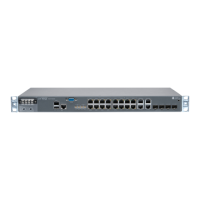
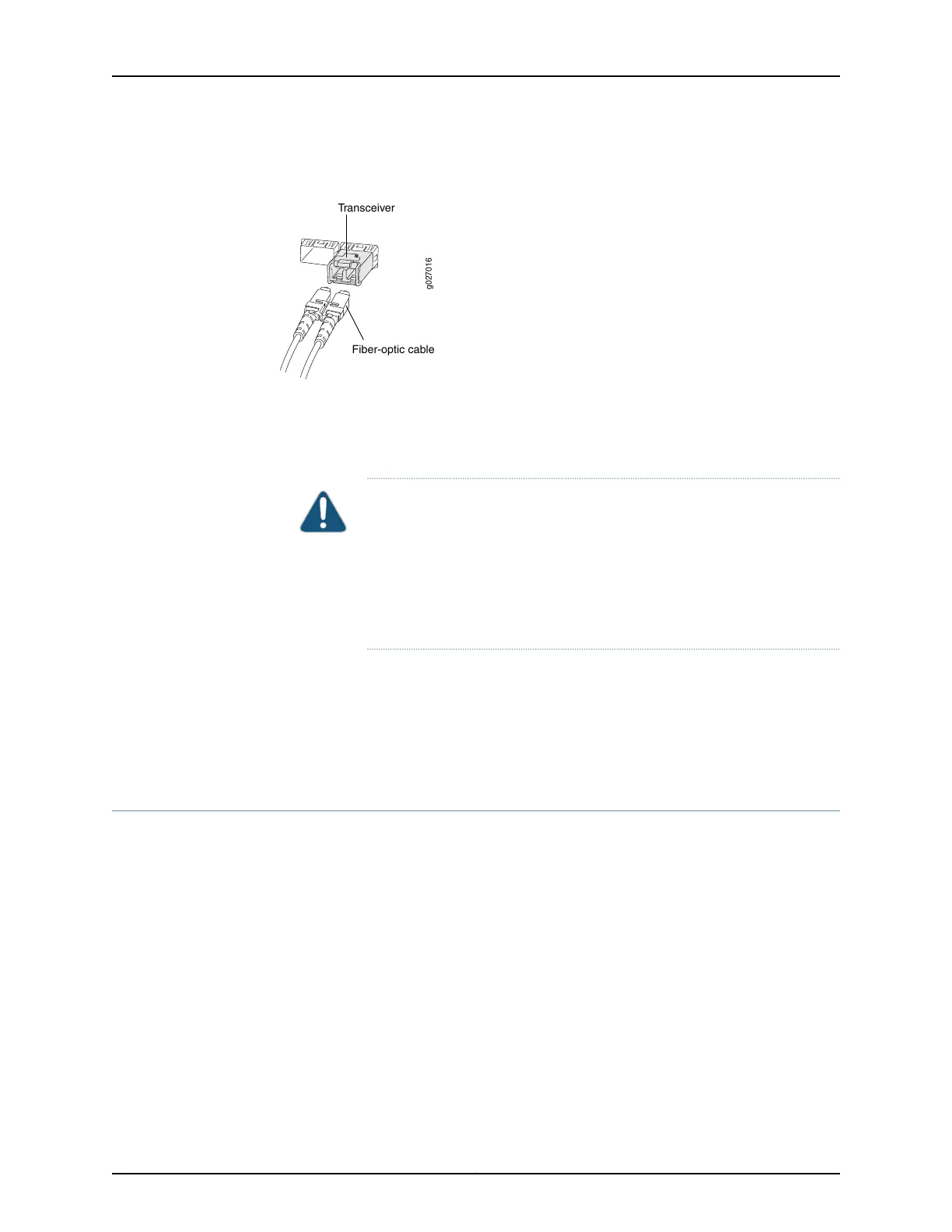